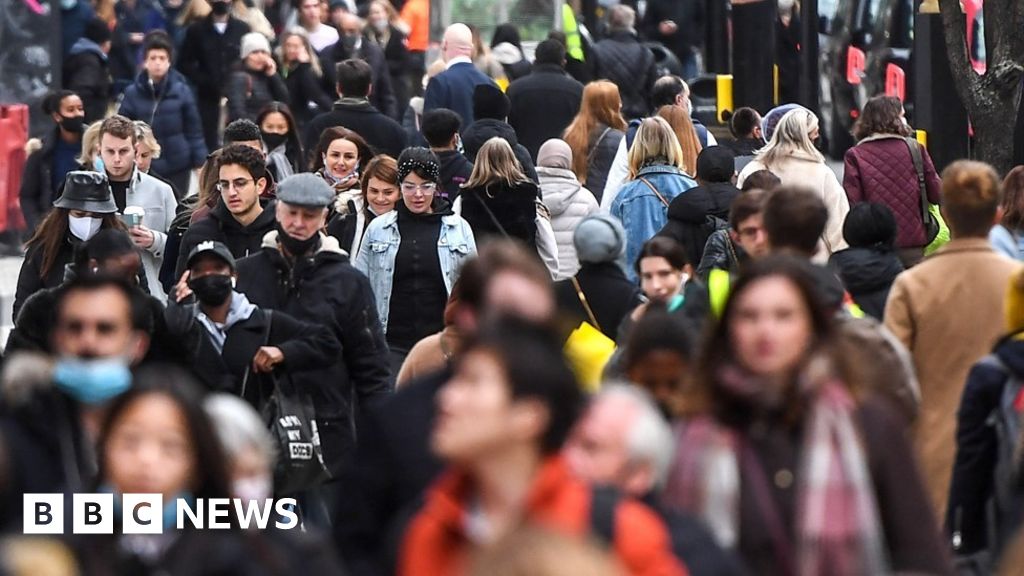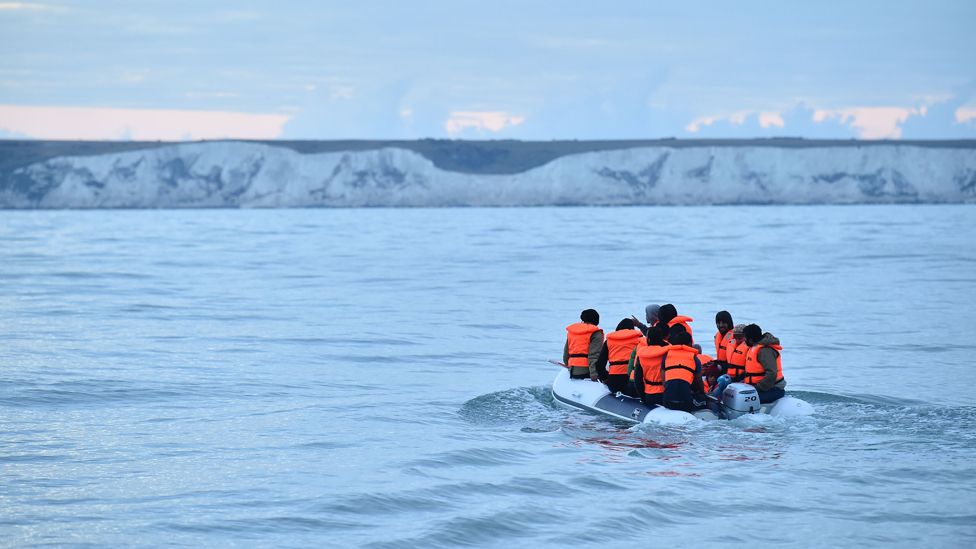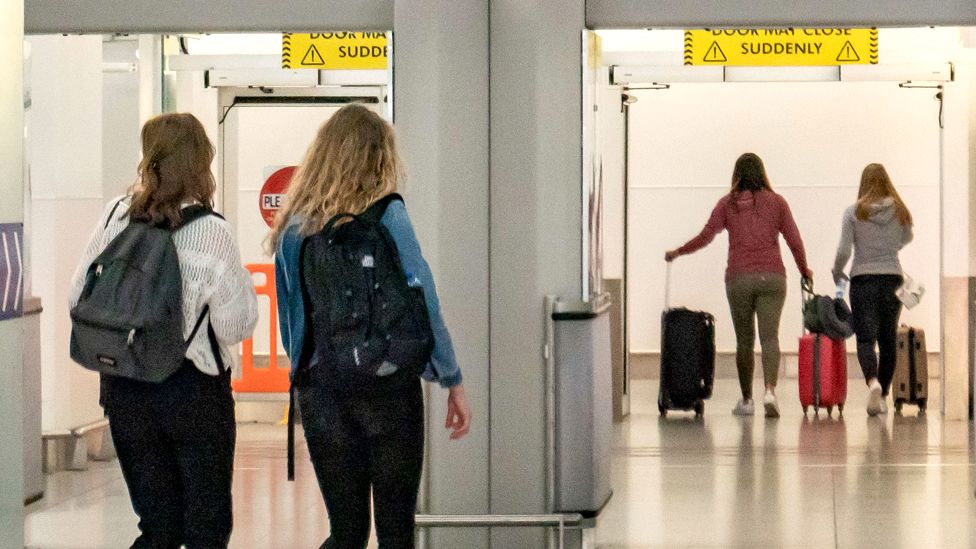
Net migration into the UK was a record 745,000 last year, figures show – far higher than originally thought.
Office for National Statistics data published on Thursday show that experts have revised up previous estimates.
In May, it said net migration – the difference between the number of people coming to live in the UK and those leaving – for 2022 had been 606,000, 139,000 lower than the true figure.
No 10 said migration was “far too high” but it was taking action.
PM Rishi Sunak’s spokesman said migration was putting “unsustainable pressure on communities and councils” and it was clamping down on dependents of students arriving in the UK. “We believe there is more to do,” he added.
Labour leader Sir Keir Starmer said “shockingly high” net migration represented “a failure not just of immigration, but also of asylum and of the economy”.
The ONS said the population of England and Wales grew by an estimated 1% in the year to June 2022 – the fastest rate since the baby boom in the 1960s, but this time it was driven by international migration.
But it cautioned its estimates could be revised again – and provisional figures to June of this year suggest the rate of net migration may now be slowing.
Statisticians said in the year to June net migration fell back to 672,000, after 1.2 million people came to live in the UK for at least a year, and 508,000 left.
The vast majority (968,000) arriving were from countries outside the European Union.
Students accounted for the largest group of non-EU migrants, also true of last year.
But there has been an increase in workers arriving with visas to fill chronic staff shortages in the NHS and social care, the ONS said.
Arrivals of people via humanitarian routes have fallen from 19% to 9% over the same period, the ONS said, with most of these made up of Ukrainians and British Nationals (Overseas) arrivals from Hong Kong.
They said estimates showed a marked change in immigration since 2021 following Brexit – when free movement for EU nationals ended, the easing of travel restrictions after the pandemic and the war in Ukraine.
However, the ONS said it was too early to know whether the latest falling net migration figure was the start of a downward trend, but recent estimates did indicate a slowing of immigration coupled with increasing emigration.
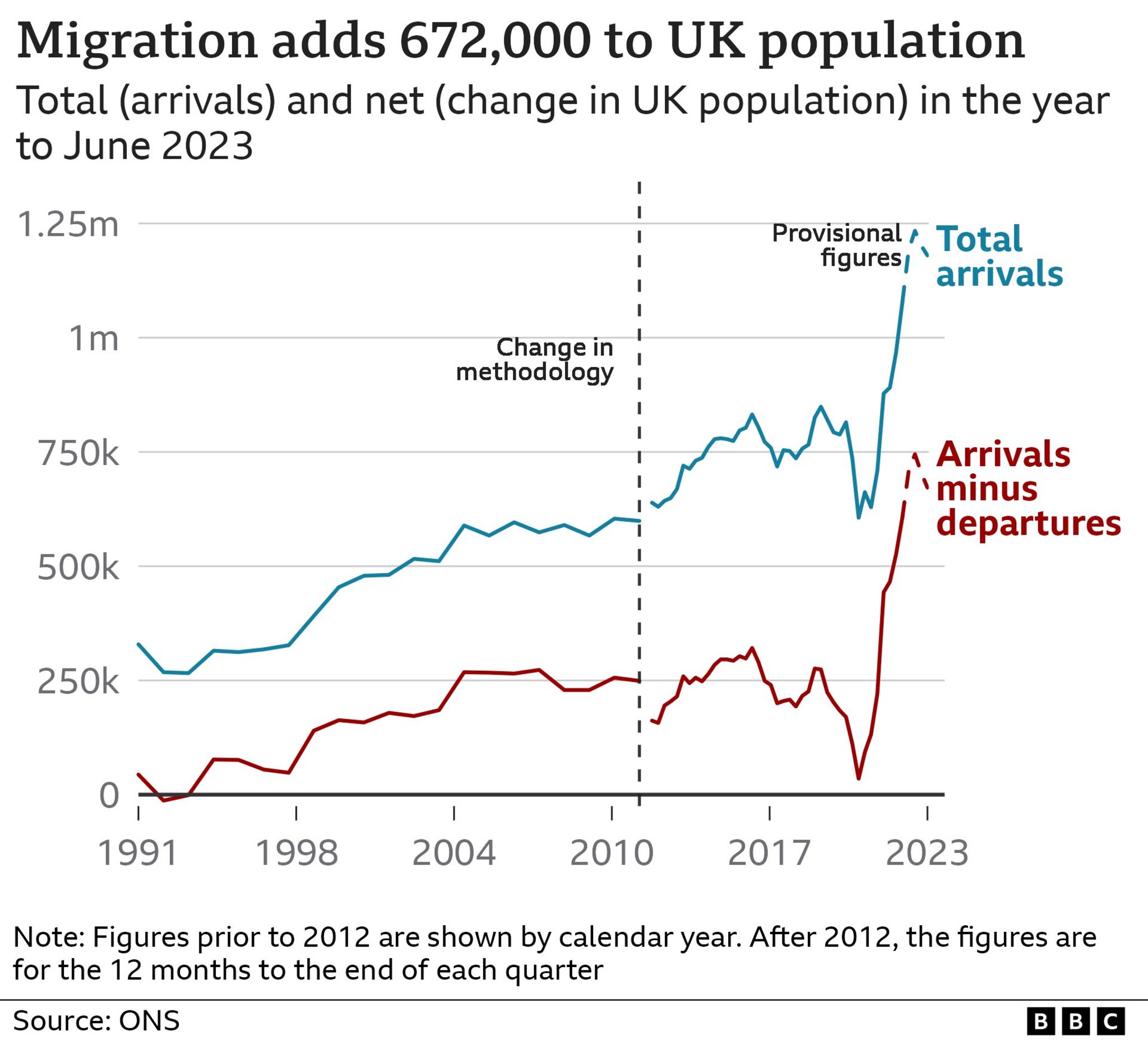
With more than a decade of Conservative-led governments promising to reduce numbers, these latest figures represent a political challenge for the prime minister.
Back in 2010, David Cameron, former Tory PM now foreign secretary, pledged to get net migration below 100,000 – “no ifs, no buts”. And the party’s 2019 manifesto also committed to bring the rate down, without setting a specific target.
Home Secretary James Cleverly said the government remained “completely committed” to reducing levels of legal migration while also focusing on “stopping the boats”, referring to the issue of people making dangerous English Channel crossings in small boats.
He said the ONS figures did not show a “significant increase from last year’s figures” and pointed to “a number of important and positive changes” affecting them.
“The biggest drivers of immigration to the UK are students and healthcare workers – [they] are testament to both our world-leading university sector and our ability to use our immigration system to prioritise the skills we need,” he said.
He added that he was “proud” the UK had welcomed more than half a million people through humanitarian routes, principally from Hong Kong, Ukraine and Afghanistan, over the last decade but said they still needed to reduce numbers by “eliminating the abuse and exploitation of our visa system by both companies and individuals”.
Some Conservative MPs are not convinced by his argument however.
The New Conservative group, on the right of the party, called for Rishi Sunak to “act now” on the “do or die” issue and propose a package of measures to bring down migration.
“Each of us made a promise to the electorate. We don’t believe that such promises can be ignored,” the group, led by Miriam Cates, Danny Kruger and Sir John Hayes, said in a statement.
It is understood the government is considering some new measures, including:
- Limiting to one the number of relatives that health and social care workers are allowed to bring with them
- Raising the minimum salary threshold for work visas
- And abolishing the system allowing employers to pay less where there are recognised shortages
Downing Street said any next steps needed to be carefully considered.
Labour has criticised the government for the cost of using hotels to house asylum seekers who make up a tiny proportion of overall migration.
Home Office figures, also published on Thursday, showed hotel use reached a record high in September – despite a slight fall in the asylum backlog.
There were 56,042 people in hotel accommodation, while 58,444 people were in “dispersed” accommodation – usually housing provided by the Home Office through private companies.
The number of people in hotels rose by 5,500 over three months while the number in housing stayed broadly the same.
Labour’s shadow home secretary Yvette Cooper said the number of asylum seekers in hotels was 10,000 more than when Rishi Sunak promised to end hotel use – and was costing almost £3bn a year.
“Once again, the British taxpayer is footing the bill for the Conservatives’ chaos,” she said.
The population of England and Wales was estimated to be 60.2 million mid-2022, an increase of around 578,000 – or 1% – since 2021.
The ONS’s Neil Park said: “Unlike the baby boom driving population growth in the 1960s, the increases in our latest estimates are predominately being driven by international migration.”
He said the picture varied across regions, with growth higher in the north of England than the south, and lowest in London.
Related Topics
-
-
13 hours ago
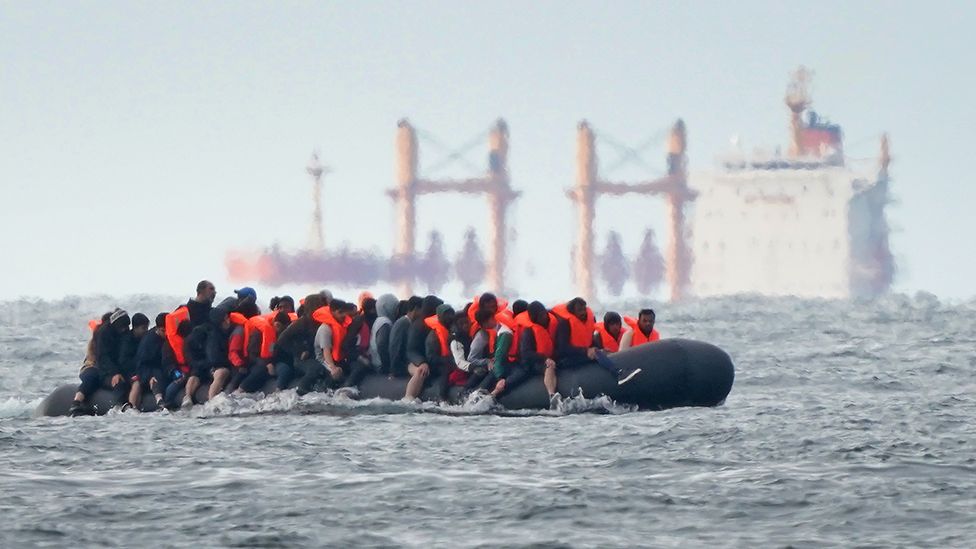
-
